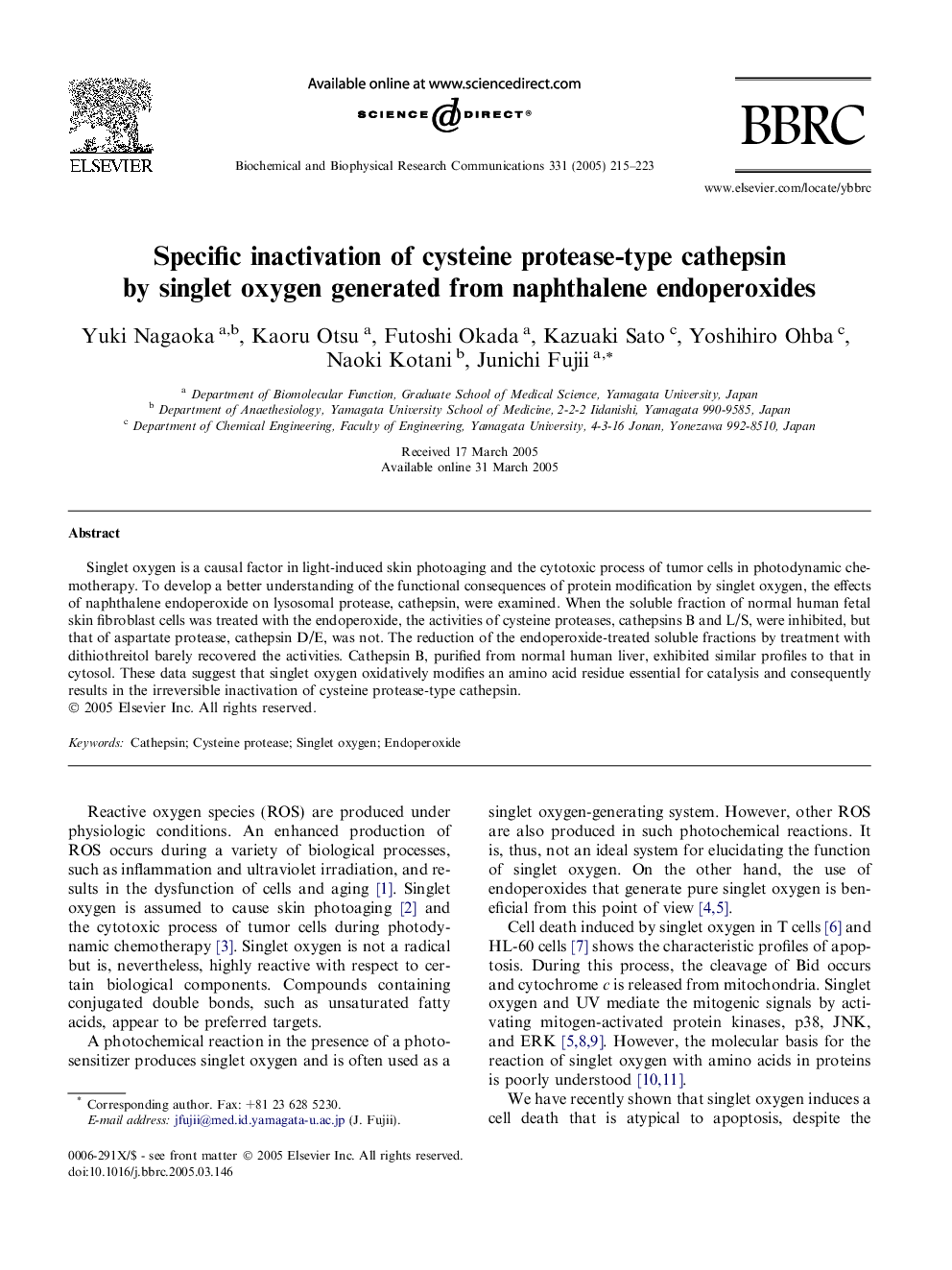| Article ID | Journal | Published Year | Pages | File Type |
|---|---|---|---|---|
| 10771379 | Biochemical and Biophysical Research Communications | 2005 | 9 Pages |
Abstract
Singlet oxygen is a causal factor in light-induced skin photoaging and the cytotoxic process of tumor cells in photodynamic chemotherapy. To develop a better understanding of the functional consequences of protein modification by singlet oxygen, the effects of naphthalene endoperoxide on lysosomal protease, cathepsin, were examined. When the soluble fraction of normal human fetal skin fibroblast cells was treated with the endoperoxide, the activities of cysteine proteases, cathepsins B and L/S, were inhibited, but that of aspartate protease, cathepsin D/E, was not. The reduction of the endoperoxide-treated soluble fractions by treatment with dithiothreitol barely recovered the activities. Cathepsin B, purified from normal human liver, exhibited similar profiles to that in cytosol. These data suggest that singlet oxygen oxidatively modifies an amino acid residue essential for catalysis and consequently results in the irreversible inactivation of cysteine protease-type cathepsin.
Related Topics
Life Sciences
Biochemistry, Genetics and Molecular Biology
Biochemistry
Authors
Yuki Nagaoka, Kaoru Otsu, Futoshi Okada, Kazuaki Sato, Yoshihiro Ohba, Naoki Kotani, Junichi Fujii,
